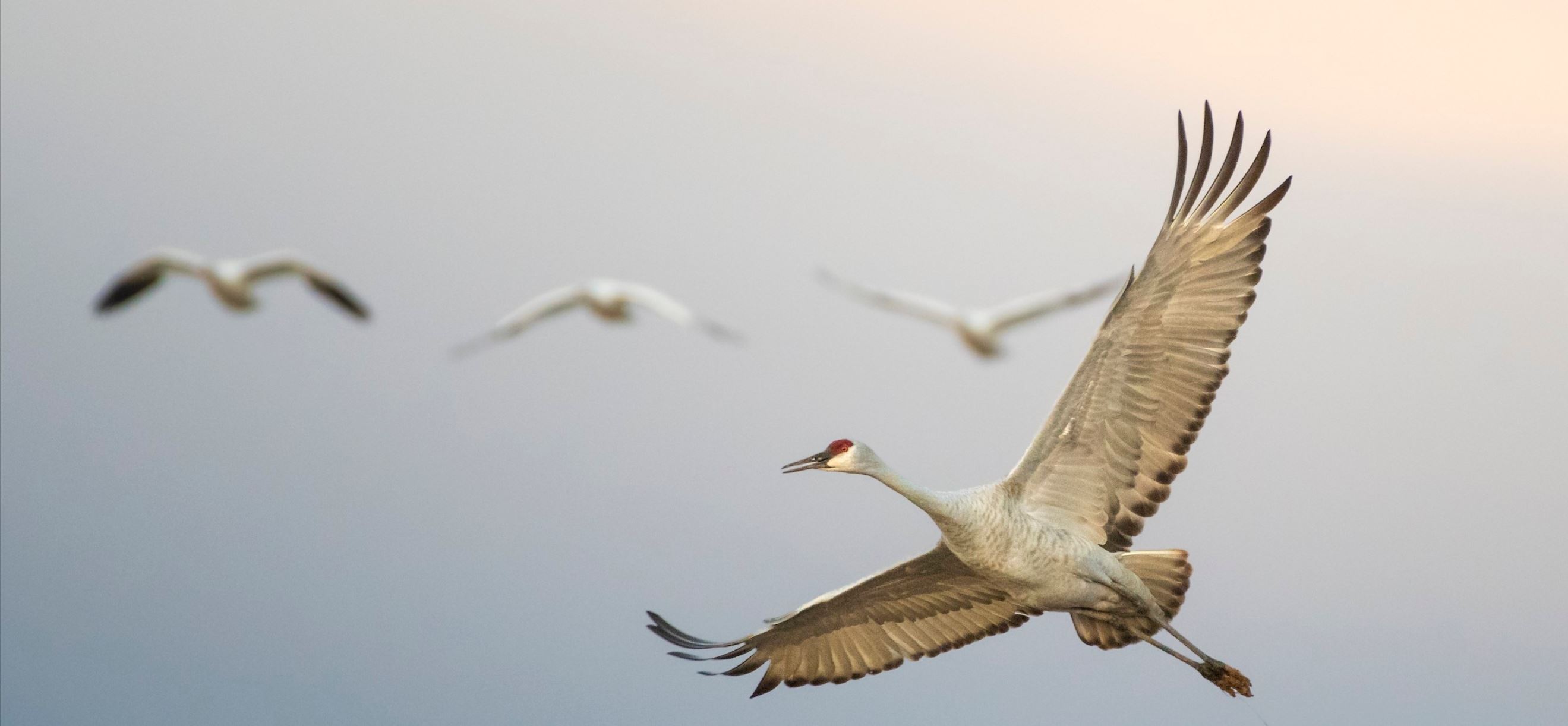 Photo ©
Bryan Calk / Macaulay Library (ML195914001)
Photo ©
Bryan Calk / Macaulay Library (ML195914001)
by Jewel Alston, Cornell class of 2021
A memoir inspired by Nest Quest Go!
Hidden in stacks of yellowed index cards at the Cornell Lab of Ornithology are rich stories of early citizen scientists. The Cornell Lab’s North American Nest Record Card Program ran from the 1960s to the early 2000s and amassed more than 300,000 records on bird nests. To make these data more accessible to researchers, NestWatch developed the Nest Quest Go! project to focus on transcribing and digitizing these cards. This is the story of Larry Walkinshaw’s contributions to our historic Nest Record Card Collection.
A Day in the Life
Lawrence H. Walkinshaw was a dentist. Larry, as he was known to friends and family, picked a career that would help support his true passion—birds. Rather than formally studying ornithology in college, he chose a path he knew would pay the bills while providing extra cash for birding trips, both across the United States and around the world. Breaking into the world of ornithology isn’t easy without a formal education, but his devotion fueled countless hours of fieldwork in a quest to understand the lives of birds.
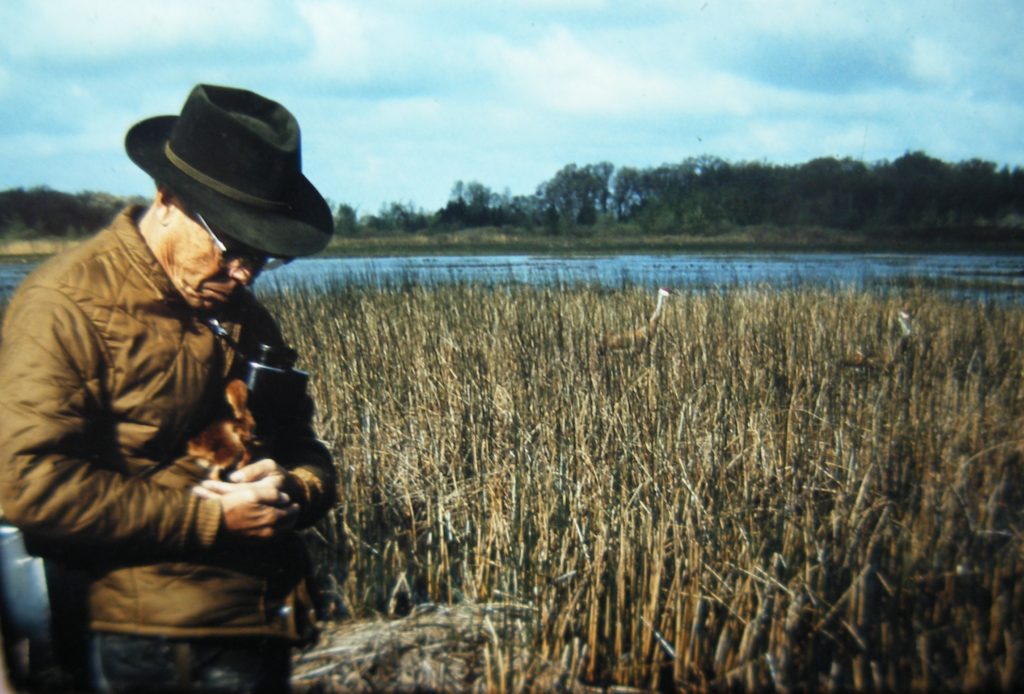
Larry Walkinshaw Holding a Young Crane, 1973.
Most days Larry rose before dawn to keep up with the birds. He tapped out reports, articles, and correspondences on his typewriter. As the sun’s rays peeked over the horizon, he would head outside to start his fieldwork. Every breeding season was spent examining the marsh, looking for Sandhill Crane nests. Larry visited each nest, measured its eggs, and carefully recorded nest dimensions. After obtaining the appropriate licenses, he began handling and banding the Sandhill Cranes. Larry could gently pick up a hatchling in front of its parents without them wreaking havoc.*
Like clockwork, Larry left the marsh for his dental office each morning at eight and stopped work promptly at four to get back to the cranes—his “other job”. It’s passion that takes people beyond the scope of their profession, and in Larry’s case, passion and profession were two separate entities. There were better things to do than clean teeth, and Larry knew it better than anyone else. Yet, the job had to be done and the money had to be made.
Larry, “Father of Cranes”
Larry’s extensive work studying cranes earned him the title, “The Father of International Studies of Gruiformes,” as described in the book On the Wings of Cranes. With every sunset spent in the marsh and each late night spent by the typewriter, Larry became closer to reaching his goal of conserving birds. Throughout his ornithological career, Larry found the time to publish three books, The Sandhill Cranes (1949), Cranes of the World (1973), and Kirtland’s Warbler: The Natural History of an Endangered Species (1983), as well as dozens of academic papers.
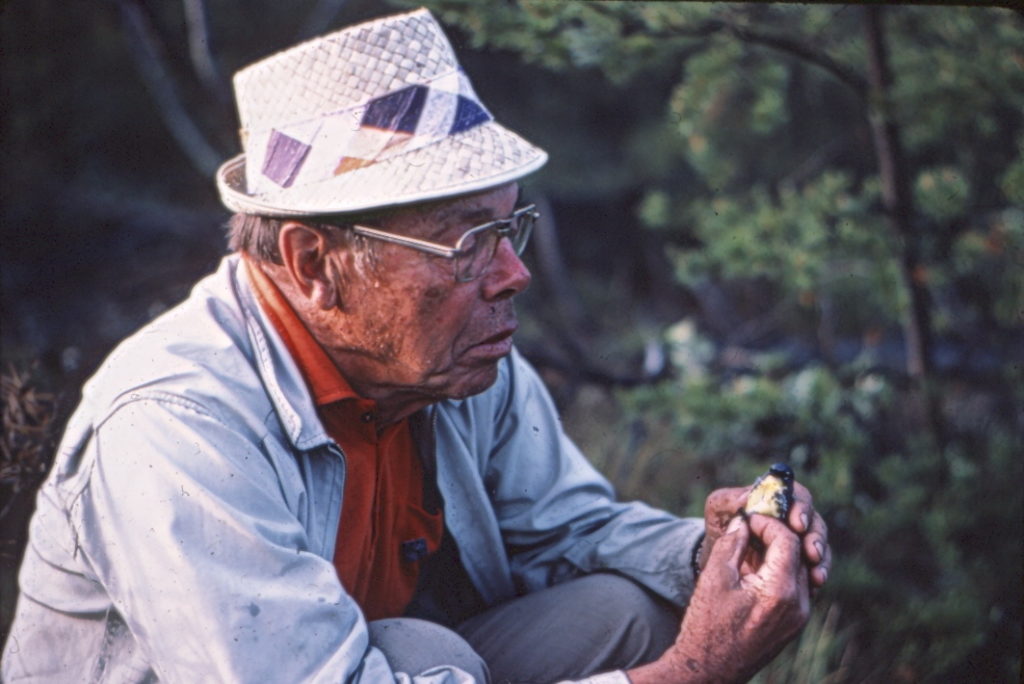
Larry Walkinshaw Banding a Kirtland's Warbler, 1977.
The name L.H. Walkinshaw is inscribed on thousands of nest record cards submitted to the Cornell Lab of Ornithology, making him the largest contributor to the collection. Despite his loyalty to cranes, Larry’s collection of nest records includes many other bird species. From Tufted Titmice to warblers, Larry submitted observations to the North American Nest Record Card Program throughout his life. The Nest Record Card Program ran from the 1960s until the early 2000s, but Larry started keeping diligent nest records back in 1920. He used this information from his data log to back-fill cards, providing a robust collection of thousands of cards spanning decades, making Larry one of a few contributors to pre-date the official start of the program. Following his death in 1993, Larry’s family donated all of his field notes, banding records, and crane observations to the Smithsonian archives, where they contribute to scientific knowledge in the way he always wanted.
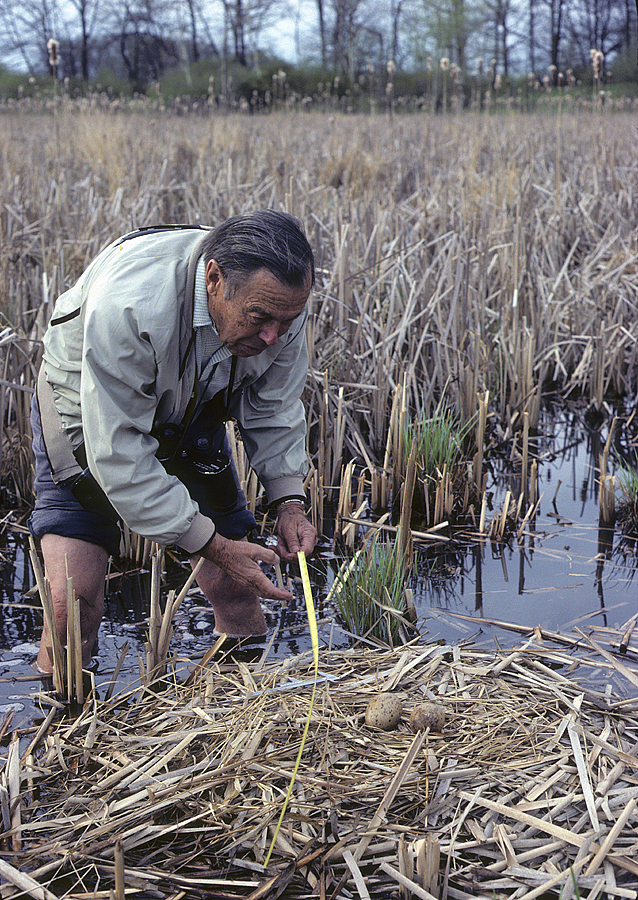
Larry Walkinshaw Measuring a Sandhill Crane Nest, 1980.
Throughout his career, Larry was particularly driven to support the survival of Sandhill Cranes and Kirtland’s Warblers. When he began his research, both of these species were scarce. Now, when Larry’s grandsons see a Sandhill Crane flying overhead or a Kirtland’s Warbler skulking in the Jack pine, they remember him and his prodigious conservation work. In the spirit of keeping his legacy alive, his family established the Walkinshaw Memorial Scholarship Fund at Cornell for students studying ornithology.
Passing Down Larry’s Legacy
Undoubtedly, Larry was the Father of Cranes, but few people knew of him as the family man he was. Larry never used his infatuation with birds as an escape, only as a sanctuary. Bringing together his family and his passion allowed Larry to combine the things he loved most in life. Regular family canoe trips, whether they were through the marsh to do daily nest checks at home in Battle Creek, Michigan, or further south in Lake Pierce, Florida, everyone learned their fair share. Larry would point out ibises, grebes, ducks, and even alligators to his fascinated children.
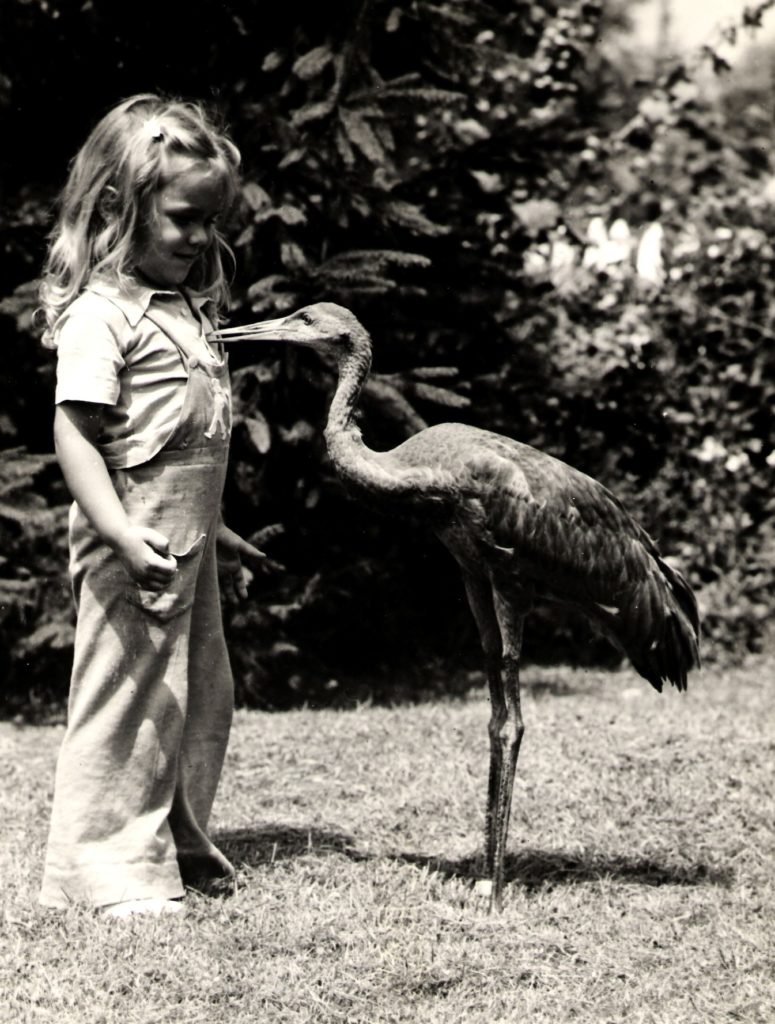
Wendy and Brownie, 1942.
Not only did Larry bring his family to the birds, but he brought the birds to his family. Larry’s children Wendy and James grew up with a rehabilitated Sandhill Crane, Brownie. Wendy recalls being scolded by her mother frequently for trying to climb on Brownie’s back for a ride. Understandably, Brownie enjoyed Mr. Walkinshaw’s company more than Wendy’s. One evening, Brownie accompanied Larry to a Lion’s Club meeting, following him inside the Hart Hotel and all the way to the meeting room.
Just like family heirlooms, Larry’s passions for birding and nature are still being passed down. Birding is as infectious as it is contagious, and his grandsons Ron and Alan Walkinshaw could vouch for that. Ingrained in each of them is not only a deep sense of appreciation for nature but a realization that we are not defined only by what we do during working hours. We are who we choose to be and what we choose to do with our time. Inspired by his grandfather, Alan encourages us to, “Follow your passion[s] in life, and hopefully, in the end, you’re rewarded with it.” Each day Larry lived his passion and shared its joys with the ones he loved. Larry Walkinshaw was, indeed, extraordinary—a standout in the world of ornithology.
Thank you for bringing to life this interesting man and his worthwhile passions. One person can make a difference!
This is a wonderful story to share during the pandemic when so many dreams have been disrupted. Dr. Walkinshaw’s ability to combine disparate career/vocation goals provides a roadmap for living the good life for all the recent graduates who are trying to figure out their paths forward.
What a heartwarming story about a truly amazing man!
I had the privilege to meet Larry while he lived in FL. He was quite the gentleman.
I remember well meeting and getting to know Mr. Walkinshaw after being a state park naturalist in Waterloo Recreation Area in Michigan and studying the cranes there in the 1970’s.
First met him at a Kirtland’s Warbler Conference in Mio, MI one year, and comparing memories and notes. He graciously autographed both his crane and warbler book studies for me, which I cherish in my library as I keep my own records now of nesting behavior of Woodducks and Hooded mergansers at my lake dock year after year. I remember his dedication.
The story is so touching, I can feel Larry’s love for cranes. I will read his book, want to know more about his vision of life. Thanks
Larry is my grand uncle, brother to my mother’s mother. Thank you Jewel for the lovely article and pictures of him. My son has always had an uncanny ability to catch birds in his hands, which I have always attributed to being related to Larry.
I was always told that we were related to Dr. Walkinshaw through my grandma Grinnell. I haven’t tried to look it up, but what an interesting man. It’s amazing he got to follow his passion. We all are so much much better for it.
The photo of Wendy Walkinshaw with Brownie the crane is simply perfect. Children capture our commonality with birds best.